Essential to Any Physical Transformation Program
Posts 003 and 004 explained how the body produces the energy that drives exercise by combining oxygen from the bloodstream with glucose, the type of sugar the body burns as its fuel.
Now, other things being equal, at some point this combining of oxygen with glucose would exhaust the supply of oxygen circulating in the bloodstream
So to sustain exercise, the bloodstream’s oxygen supply must be continually replenished. This occurs through respiration, each in-breath drawing fresh oxygen into the lungs.
Once in the lungs, this newly-inhaled oxygen passes into tiny, balloon-shaped air sacs called alveoli, through which the fresh oxygen enters the bloodstream. Circulation of blood throughout the body distributes this fresh oxygen supply to all of the body’s cells.
Continual replenishment of the bloodstream’s oxygen supply allows glucose – which is formed from carbohydrate previously eaten – to be continually combined with oxygen. This in turn allows the body to produce the energy required to sustain exercise.
However, this process of combining glucose with oxygen also produces carbon dioxide, a toxic by-product of energy production that must be expelled from the body to prevent its buildup in the bloodstream. Once carbon dioxide is carried through the bloodstream to the alveoli, it passes into the lungs, allowing it to be expelled from the body with each out-breath.
Interestingly, it is buildup of carbon dioxide in the bloodstream – not a shortage of oxygen – that triggers the body’s “need-to-breath” mechanism. This ensures that carbon dioxide is continually expelled from the body, thus preventing its buildup.
To sum up thus far, respiration has the dual purpose of continually (1) replenishing the bloodstream’s oxygen supply, and (2) expelling carbon dioxide from the body.
Now, replenishment of the body’s oxygen supply and avoiding buildup of carbon dioxide both critically depend on efficient functioning of the heart and lungs. The stronger the heart and lungs, the more efficiently the body’s oxygen-carbon dioxide exchange system functions.
The opposite is also true. The weaker the heart and lungs, the less efficiently the body’s oxygen-carbon dioxide exchange system functions.
As its name implies, the purpose of cardiopulmonary exercise (hereafter referred to as “cardio exercise”) is to strengthen the functioning of these two vital organs. As noted above, the stronger these two organs become, the more efficiently the body’s oxygen-carbon dioxide exchange system functions.
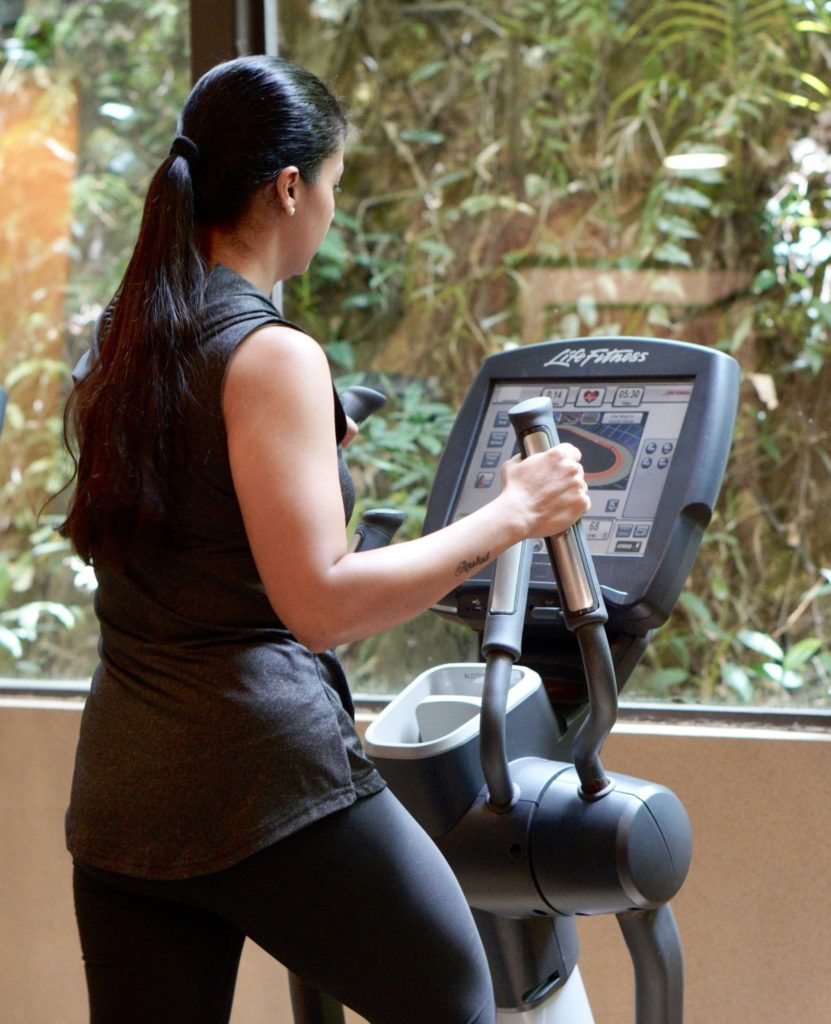
It’s actually the increasingly efficient functioning of the body’s oxygen-carbon dioxide exchange system that allows exercise workloads to be gradually increased over time.
And it is gradual increases in exercise workloads that allow trainees to achieve their physical transformation goals, regardless of whether the major focus of these goals is fitness, endurance, strength, or muscularity.
Without cardio exercise, the heart and lungs function less and less efficiently over time, the decline in efficiency roughly paralleling the decline in the level of physical conditioning.
This causes replenishment of oxygen to the cells and expelling of carbon dioxide to suffer. The body’s inevitable response to this deficiency is making the heart pump harder or faster, or both, in extreme cases putting deconditioned individuals at risk of a heart attack or stroke.
Notably, the heart and lungs function least efficiently in the most physically deconditioned individuals. Thus, when fully deconditioned individuals first begin an exercise program, the stress on the heart is greatest.
This is why blog post 002 (The Principle of Accommodation) cautions against overenthusiasm when deconditioned individuals – fully deconditioned individuals in particular – first begin exercising.
To sum up thus far once again, cardio exercise improves functioning of the heart and lungs. The stronger these two vital organs become, the more efficiently the body’s oxygen-carbon dioxide exchange and circulatory systems function.
And it is increasingly efficient functioning of these two systems that allows exercise workloads to be increased over time, which in turn allows the goals of physical transformation programs to be achieved, regardless of whether they focus on fitness, strength, endurance, or muscularity.
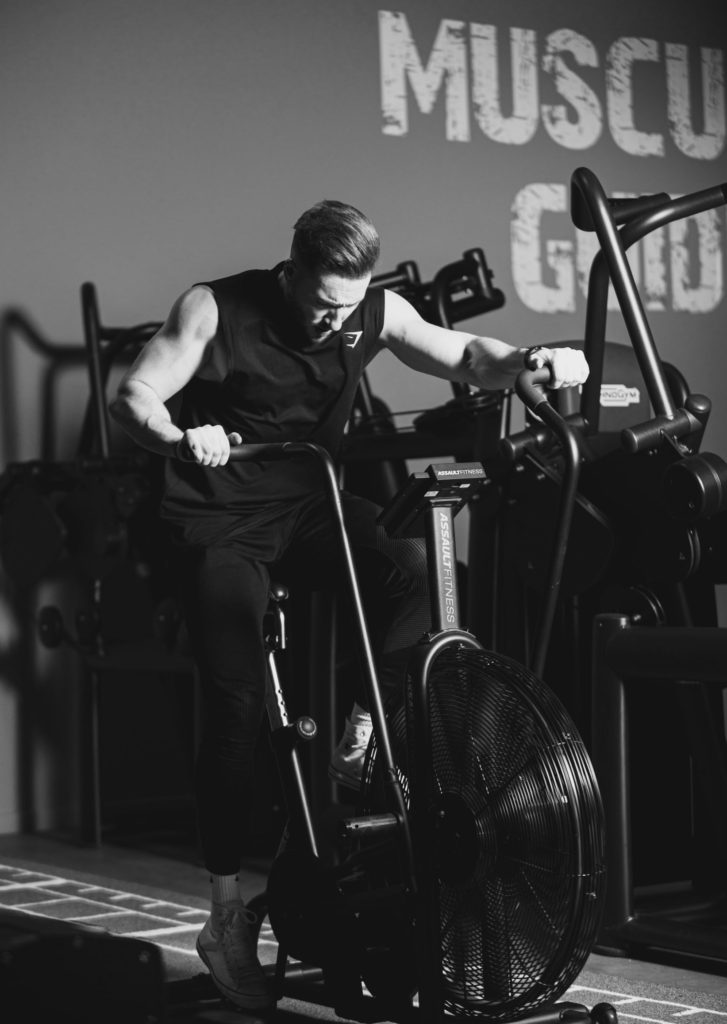
Benefits of Cardio Exercise
All benefits of cardio exercise ultimately derive from improved functioning of the body’s oxygen-carbon dioxide exchange and circulatory systems.
These benefits, of which there are many, are summarized below.
While some of the benefits discussed below have been verified empirically, others are those I have either experienced myself over the long term, or that have been reported to me unprompted either by individuals I have trained, or by competitive bodybuilding peers I trust deeply.
- Reduced stress on the heart. Cardio exercise strengthens the heart by making it slightly larger and significantly stronger, particularly if performed regularly over the long term. This increases the efficiency with which blood is circulated throughout the body. This in turn translates into fewer heart beats per minute being required to circulate the body’s blood supply.
- Elevated mood. Cardio exercise elevates mood because it releases “feel-good” hormones into the body, which impart a feeling of mastery over one’s life-situation. Some trainees who perform cardio exercise regularly have reported feelings of being more fully present in their relationships and interactions with others. Even extremely depressed trainees have reported that regular cardio exercise dissipates depression.

- Deeper breathing. Regular cardio exercise induces deeper breathing. This translates into fewer breaths per minute being required to exchange given volumes of oxygen and carbon dioxide.
- Smaller tidal volume. The deeper breathing induced by regular cardio exercise reduces the tidal volume, which is the amount of stale air that remains in the lungs because it fails to be exchanged during respiration.
- Increased energy levels. Individuals I have trained who regularly perform cardio exercise have reported increased energy levels, which urges their bodies into yet further physical activity, such as resistance training programs (e.g., working out with weights).
- Increased daily calorie allowance. Cardio exercise increases the number of calories burned per day. This allows trainees who regularly include cardio exercise in their training regimes to eat larger volumes of food without putting on additional adipose tissue (i.e., bodyfat). This increases the number of nutrients these trainees obtain from meals, including nutrients that have yet to be discovered.
- Improved balance. Most forms of cardio exercise (see below) strengthen the stabilizer muscles. This improves balance over time, which guards against falls and injuries sustained from them.

- Improved brain nutrition. Cardio exercise improves circulation of blood to all cells in the body, including the brain cells. By delivering additional nutrients to the brain, regular cardio exercise improves brain nutrition independently of changes in one’s dietary regimen.
- Improved functioning of the appetite mechanism. Called the appestat by some, this mechanism switches off the desire for food when one has eaten sufficiently, and switches it back on again when the blood glucose falls to the body’s threshold level for triggering hunger.
Now, there remains considerable debate as to whether or not there actually exists a physical appestat in the hypothalamus region of the brain that regulates food intake. However, as I see it, this issue is far less important than is the fact that regular cardio exercise significantly increases the precision with which this mechanism operates.
In my experience, trainees who perform regular cardio exercise make increasingly healthier food choices, both in terms of the quality (i.e., nutrient density) and quantity of food eaten. This translates into improved health overall, increased energy levels, and over the long term, the increasingly heavier exercise workloads that are essential for meeting physical transformation goals.
Further, while the desire to eat food tends to increase in the first hour or so following cardio exercise, in my experience, regular cardio exercise depresses the appetite generally over the long term.
All of the above positive outcomes due to regular cardio exercise probably occur for many reasons, most of which have nothing to do with whether or not there exists a physical appestat in the hypothalamus region of the brain.
And regardless of how the causative mechanism underlying the link between regular cardio exercise and its benefits actually works, it is notable that the relationship between cardio exercise, appetite, and diet did not escape the notice of Japan’s imperial government during World War II.
In the face of food shortages and rationing, throughout the war, the Japanese government continually urged its citizenry to perform cardio exercise, telling them this would increase energy levels and improve morale. An obvious side-benefit of this strategy for the government was to reduce food intake nationally, thereby at least partially relieving food shortages
- Reduction in adipose tissue. Cardio exercise burns calories, and other things being equal, reduces the amount of adipose tissue (i.e., fat) carried on the body. This in turn reduces the level of stress placed on the heart, which, it turns out, is far greater than one would initially think.
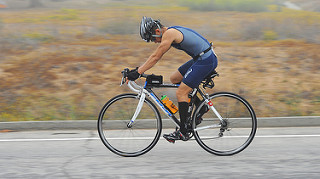
Here’s why.
Each pound of excess fat carried on the body contains five miles of blood vessels through which the heart must circulate blood.
According to an article by Vivien Williams in the Mayo Clinic Health Series Mayo Clinic Minute that cites Doctor Stephen Kopecky, M.D., a Mayo Clinic cardiologist, the negative impacts of excess adipose tissue on the body are far more dramatic that it would first seem. (If you’d like to read Ms. Williams’ short five-paragraph article for yourself and view the attached one-minute video clip by Dr. Kopecky, you can access both here.)
Here’s how Dr. Kopecky explains this.
The average resting heart rate for adult males is 70 beats per minute. This translates into 4,200 beats per hour, or 100,800 beats per day. When you multiply 100,800 beats per day times five miles of blood vessels, you get a total of 504,000 miles of blood vessels through which the heart must pump blood each day. And that’s for just one pound of fat.
In light of the above, even if regular cardio exercise results in loss of just one pound of bodyfat long term, this would significantly reduce the stress placed on the heart.
Finally, for those whose physical transformation goal is physical beauty in either its slim-ness or muscularity forms – the less fat carried on the body, the better.
For readers whose physical transformation goal is muscularity, less fat on the body translates into increased visibility of veins, muscle striations, and separation between muscles. This increases the amount of visible detail on the physique, which is what makes muscular bodies so universally appealing.

Competitive bodybuilders are keenly aware of this. This is why a major part of bodybuilding contest preparation is using cardio exercise to bring the percentage of fat in total body weight at least below 10%. This maximizes the amount of detail on the physique during the final weeks of contest preparation, which in turn greatly increases the probability of placing well in a bodybuilding contest.
What Exactly is Cardio Exercise?
For an activity to qualify as cardio exercise, it must
- raise the number of heart beats and breaths taken per minute, and
- strengthen the functioning of the heart, lungs, and circulatory system.
Technically speaking, there are two forms of cardio exercise: aerobic and anaerobic.
These two forms of cardio exercise correspond to the body’s two energy systems:
- the aerobic system,which requires oxygen, and
- the anaerobic system, which doesn’t
The aerobic system is activated by lower-intensity exercise lasting 20 minutes or more.
In contrast, the anaerobic system is activated by exercise involving short bursts of energy, such as high-intensity interval training (HIIT).
Examples of HIIT include back-to-back sprints in which the body is repeatedly run to exhaustion, multiple vertical jumps on to elevated platforms until breathlessness is produced, and performing barbell squats to muscle failure.

Because aerobic cardio exercise involves lower-intensity activities such as jogging, running, power-walking, cycling, or swimming, it is well suited to trainees just beginning an exercise program. That said, it is also used quite effectively by advanced trainees.
Anaerobic cardio exercise is best suited to advanced trainees who have already achieved a considerable level of physical conditioning.
Forms of Cardio Exercise
Of all the forms of cardio exercise, the form best for you is the one you enjoy the most, since you’re most likely to sustain it over the long term.
And you have a wide range of activities to choose from, since numerous activities fulfill the two criteria for being classified as cardio exercise, which, to reiterate for reader convenience, are:
- raising the number of heart beats and breaths taken per minute, and
- strengthening the functioning of the heart, lungs, and circulatory system.
For those who prefer non-weight-bearing cardio exercise, if done properly, cycling – whether on a push-bike or stationary bike – qualifies. The same is true of swimming laps.

A convenient benefit of cardio exercise is that you can do most activities that qualify anytime, anywhere, the most notable example being a run or power-walk at a nearby park, on a beach, or even a city street.
For trainees who prefer doing cardio exercise as part of their gym routines, there is now a wide range of cardio exercise machines to choose from, thanks to the explosion of cardio exercise machine technology over the past two decades.

Many of these new machines make cardio exercise far more efficient and anatomically correct than those previously available. For example, there now even exists a seated elliptical machine for those for whom standing elliptical exercise machines exacerbate back pain.
Some trainees think of cardio exercise solely as a means of warming up for resistance training, such as a workout with weights. But if reducing bodyfat is the primary goal of your cardio exercise regimen, then it’s best to do your cardio exercise at the end of your workout rather than at the beginning. This is because cardio exercise burns bodyfat most efficiently when performed when the blood sugar level is low and falling, which is typically the case at the end of your workout.
Think of it this way. If you were to do cardio exercise immediately after eating a plate of pasta, the calories burned would be those from the pasta, not bodyfat.
Actually, if the primary goal of your cardio workout is bodyfat reduction, then the very best time to do cardio exercise is first thing in the morning on an empty stomach, perhaps after drinking a zero-calorie beverage that contains a bit of caffeine such as black coffee or tea.

Finally, there’s at least some empirical evidence that suggests that the most important benefits of cardio exercise – strengthening the heart and lungs – fall off quite quickly after 30 minutes, in fact, so quickly that beyond 40 minutes, they’re negligible.
This suggests that if done properly, cardio exercise workouts need not last more than 30 minutes – 40 minutes max – given that the primary goal of your cardio workout is improving heart and lung function. However, for those primarily interested in bodyfat reduction, cardio exercise beyond the 40-minute mark does have the benefit of burning additional calories.
Further, for trainees whose physical transformation goal is endurance (such as distance runners), bouts of aerobic cardio exercise that far exceed 30 or 40 minutes are an absolute necessity.
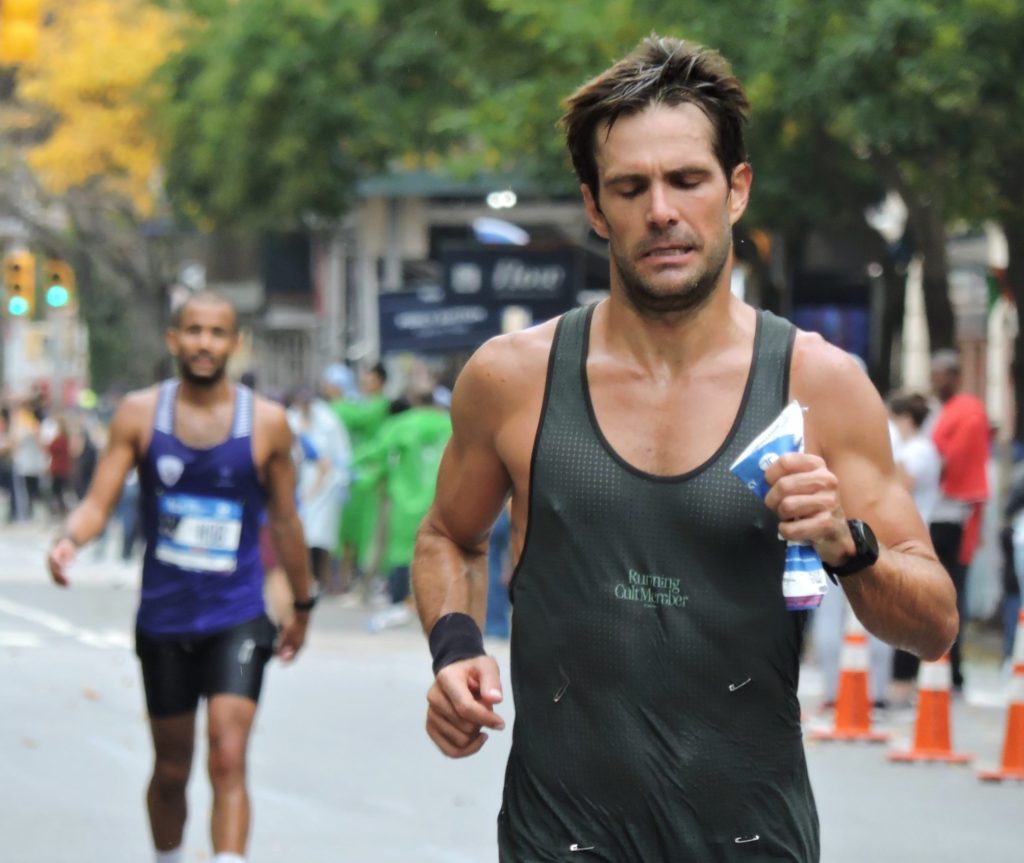
Note that capping the duration of your cardio workout at 30 (or 40) minutes means that all further increases in cardio exercise workload must come from increasing the intensity of your workout. It’s an easy matter to quantify such increases in workout intensity if you’re using a cardio exercise machine with digital readout.
If you’re using a particular type of cardio exercise machine repeatedly, then increasing the numerical level of effort (Level 1, Level 2, Level 3) is an easy way to keep track of increases in workout intensity. However, in my experience, a far better quantitative measure of cardio exercise intensity is calorie consumption per hour, as this measure is standardized across all cardio exercise machines of all brands at all locations.
Quantifying increases in the intensity of an anaerobic cardio workout (e.g., an HIIT workout) would at first seem a more daunting task than when using an aerobic exercise machine with digital display that unambiguously quantifies such increases for you.
That said, the body has a mechanism by which cardio workout intensity increases automatically over time, since the more fit the heart and lungs become, the greater the workout intensity required to produce a given level of exhaustion, breathlessness, or muscle failure through HIIT exercise.
Finally, if anaerobic exercise is the sole component of your cardio exercise regimen, one way of checking to make sure you’re increasing the level of intensity of your cardio workout is to note whether or not your recovery time from exhaustion, breathlessness, or muscle failure from HIIT activities falls over time. This can easily be quantified by using a watch that unambiguously indicates seconds, preferably one with a sweep hand.
Given that the duration of your anerobic cardio workout is held constant, shorter recovery times from exhaustion, breathlessness, or muscle failure brought on by HIIT exercise – which indicate increasing levels of cardiopulmonary fitness brought about by increasing exercise workloads – can only result from increasing cardio exercise intensity.
Generally speaking, it is how quickly a trainee’s heart rate recovers after cardio exercise that is the “gold standard” for determining that trainee’s level of physical conditioning. The more rapidly the heart rate falls after a bout of cardio exercise, the more efficient the functioning of the trainee’s heart and lungs.
If you are interested in determining how rapidly your heart rate falls after a bout of cardio exercise, three notes of caution are in order.
First, due to the stress it places on the heart, abruptly terminating extended aerobic cardio exercise without a cool-down period of at least two minutes can be dangerous, particularly for trainees who have just begun an aerobic cardio exercise physical conditioning program, or for those who have not yet achieved a significant degree of physical conditioning.
Second, because of this, determining a trainee’s level of conditioning by means of monitoring the speed at which the heart rate falls when abruptly terminating an extended bout of aerobic cardio exercise is something that should done only infrequently.
Finally, this procedure should be performed under the supervision of someone with some type of medical training. In other words, seek the help of, say, a former combat medic, someone who currently works as a medical first-responder, a nurse, a nurse practitioner, or a physician’s assistant. Your very best option would be a licensed medical doctor heavily focused on sports medicine with whom you regularly train. In all cases, the better this person knows you, the more protected you’ll be, should anything go awry.
Your Cardio Program
If you’re unsure as to whether or not a particular activity qualifies as cardio exercise – or you’re unsure as to whether or not you’re performing a cardio exercise activity in a way that maximizes its benefits – then a simple way to find out is to perform the “talk test”.
If you find it difficult to speak – even in short sentences – when you’re performing a particular cardio exercise activity, then the activity most likely qualifies as cardio exercise, and you’re most likely performing it in a way that maximizes its benefits.

A far more structured – and sophisticated – approach to determining whether or not you’re performing a particular cardio exercise activity in a way that maximizes its benefits is explained in detail below. This approach is particularly valuable for trainees just beginning a cardio program because it uses unambiguous numerical indicators of whether or not you’re performing a particular cardio exercise in a way that maximizes its benefits.
The focal point of this more structured approach to efficient cardio exercise is your heart rate (or pulse), which is the number of times your heart beats per minute.
More specifically, this approach defines the upper and lower bounds of a specified range of heart rates referred to as your target heart rate range (explained in detail below).
In short, if your heart rate remains within your target heart rate range, then you’re performing the exercise in a way that maximizes its benefits. But if your heart rate drifts outside your target heart rate range, then the way you’re performing the exercise won’t maximize its benefits.
Continually monitoring your heart rate throughout your entire cardio workout is easy with the help of a pulse monitor that displays your current heart rate. An inexpensive pulse monitor (i.e., one that displays only your current heart rate) is actually best for this purpose. Pulse monitors are available online, as well as from sporting goods stores.
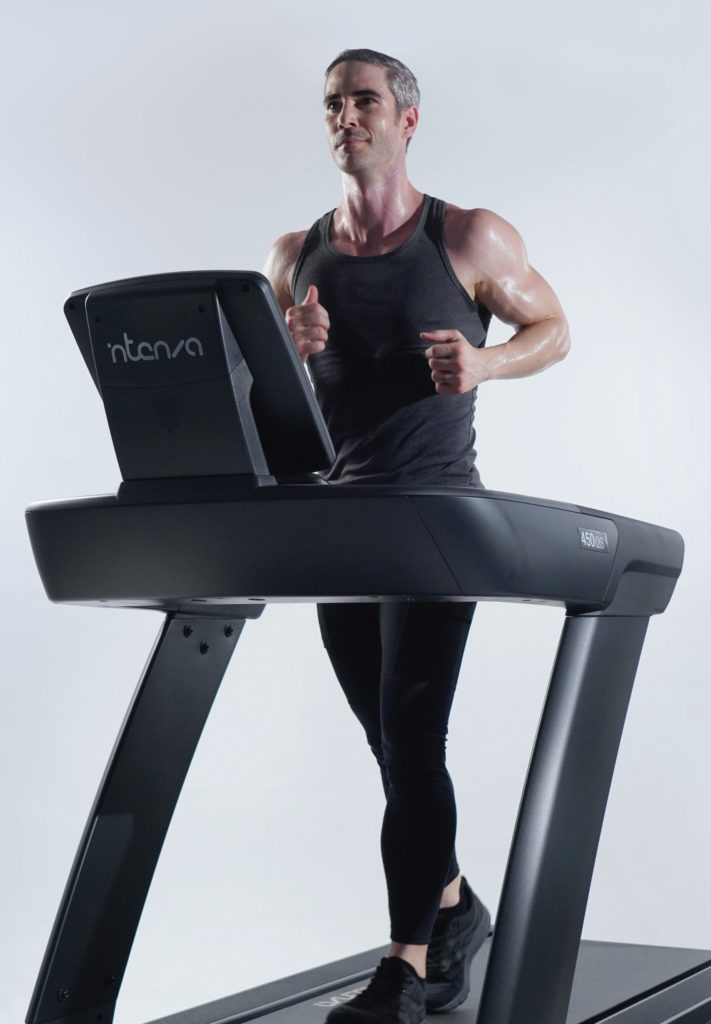
To sum up this section thus far, to perform cardio exercise efficiently, you’ll need to determine your target heart rate range in advance of your workout (how you do this is explained below). Then with the help of your pulse monitor, you’ll strive to keep your heart rate within your target heart rate range for the entire duration of your cardio workout, excluding your 2-minute warmup and 2- to 3-minute cooldown periods.
If your measured heart rate drifts outside your target heart rate range at first, don’t be concerned. With practice, you’ll be able to keep your heart rate well within your target range.
As your level of cardiopulmonary fitness increases over time, it’s possible you’ll want to adjust your target heart rate range upward. It’s thus important to know your target heart rate range in advance of each cardio workout. That said, upward adjustment of your target heart rate range is likely to occur only infrequently for reasons explained immediately below.
If you’re performing your cardio exercise in a way that maximizes its benefits, you’ll quickly discover that as your level of cardiopulmonary fitness increases, you’ll find it harder and harder to remain within your target heart rate range.
This is because performing cardio exercise regularly makes your heart slightly larger, and way stronger. As a result, fewer and fewer heartbeats per minute are required for your heart to circulate blood throughout your body. This decreases your resting heart rate, which is your heart rate when you’re seated or reclining.
Because regular cardio exercise causes your resting heart rate to fall over time, the gap between your resting heart rate and your target heart rate range successively widens. As a result, you’ll have to work harder and harder to close the increasingly wide gap between your resting heart rate and your target heart rate range.
Calculating Your Target Heart Rate Range
Your target heart rate range is bounded by your minimum and maximum number of heart beats per minute (i.e., your minimum and maximum heart rates).
There are several formulas for calculating your minimum and maximum heart rates. Of these, the most commonly used is the Karvonen Formula, which was formulated in 1957 by Martii Karvonen (1918-2008), the surgeon general of the Finnish Army.
Now, using the Karvonen Formula to calculate your target heart rate range involves two separate calculations.
You’ll need to do one calculation to determine your minimum heart rate (which forms the lower bound of your target heart rate range), and a separate calculation to determine your maximum heart rate (which forms the upper bound of your target heart rate range).
To calculate your minimum and maximum heart rates using the Karvonen Formula, you’ll need three pieces of information. These are your:
- Desired training intensity (explained further below),
- Resting heart rate, and
- Maximum heart rate
Note that the values the Karvonen formula uses for your resting heart rate and maximum heart rate are the same when calculating both your minimum and maximum heart rates. It’s only the value for your desired training intensity – which you subjectively determine yourself – that differs when using the formula to calculate your minimum and maximum heart rates.
Choosing Your Desired Training Intensity
Your desired training intensity is measured as a percentage of your maximum heart rate.
For example, a fit 25-year-old male trainee who already has significant experience with cardio exercise might choose a desired training intensity of 60% to 70% of his maximum heart rate.
Determining the target heart rate range for this trainee would thus require two separate calculations: one for 60% of his maximum heart rate, the other for 70% of his maximum heart rate. Taken together, these two heart rates would define the lower and upper bounds of this trainee’s target heart rate range.
In contrast to our hypothetical 25-year-old fit male trainee above, a deconditioned individual just beginning a cardio exercise program should initially use a desired training intensity of no more than 50% to 60% of his or her maximum heart rate. This trainee should also be prepared to adjust this downward to, say 40% to 50%, should 50% to 60% be outside his or her initial cardio training capability.
Once this trainee achieves a significant level of cardiopulmonary fitness and becomes familiar with how his or her body responds to a desired training intensity of 40% to 50%, his or her desired training intensity can be adjusted upward.
Calculating Your Minimum and Maximum Heart Rates
As mentioned above, in addition to your desired training intensity, the other two bits of information required when using the Karvonen formula to calculate your minimum and maximum target heart rates are your resting heart rate and your maximum heart rate.
There are two types of methods for calculating your resting heart rate and maximum heart rate. These are the simple method and the advanced method.
The advanced method involves time-intensive procedures, and sometimes in the case of the maximum target heart rate, specialized equipment. As a result, the advanced method is not recommended when calculating minimum and maximum heart rates for trainees just beginning a cardio exercise program. In contrast, the simple method actually involves no calculations at all, and takes literally only seconds to complete.
That said, a brief explanation of the advanced method is included below because it contains information valuable to all readers – even those who never intend to use it for calculating resting and maximum heart rates.
It is thus recommended to use the simple method for calculating your target heart rate training range, but to read through the short section on the advanced method for the useful background information it provides.
Simple Method for Calculating Your Target Heart Rate Range
First, calculate your resting heart rate
There are two options for calculating your resting heart rate using the simple method, both of them simple, easy, and quick.
The first is to just use the average resting heart rate for adult males (70 beats per minute [bpm]) or females (75 bpm).
A more accurate — and almost as quick — result can be achieved by choosing the value for your resting heart rate shown in the Resting Heart Rate Chart that corresponds to your age, gender, and level of fitness, which you can access here.
Next, calculate your maximum heart rate
Once again, there are two easy and quick options for calculating your maximum heart rate using the simple method. The first is to simply subtract your age (in years) from 220.
A more accurate result can be achieved by choosing the value for your maximum heart rate shown in the Maximum Heart Rate Chart that corresponds to your age, gender, and level of fitness, which you can access here.
Then, use the Karvonen Formula to calculate your target heart rate range
Once you know the values for (1) your desired training intensity, (2) your resting heart rate, and (3) your maximum heart rate, you’re ready to to use the Karvonen formula to calculate your target heart rate range.
Using the Automatic Karvonen Formula Heart Rate Calculator
The easiest way to do this is to use the Automatic Karvonen Formula Heart Rate Range Calculator. To use the Calculator, just enter your resting heart rate and maximum heart rate into the spaces provided. The Calculator then returns minimum and maximum heart rates for desired training intensities of 50% to 90%. You can access the Automatic Karvonen Formula Heart Rate Range Calculator here.
If for some reason you want to manually calculate your target heart rate range using the Karvonen Formula, then use the procedure explained directly below.
Note once again that you’ll need to do two calculations: one for your minimum target heart rate, and another for your maximum target heart rate.
Also note that the only variable that changes between these two calculations is your desired training intensity, which is expressed as a percentage of your maximum heart rate.
If at first glance the formula seems confusing or overwhelming, perform the calculation one step at a time, using the sample calculation below as your guide.
Here’s the formula.
Target Heart Rate = [ (max HR − resting HR) × %Intensity] + resting HR
And now, the sample calculation.
Sample Calculation:
Calculate the target heart rate range for a healthy, but deconditioned 25-year-old male, who chooses to train at 50% to 60% of his maximum heart rate.
First, calculate the trainee’s minimum heart rate
Use the first of the two simple methods explained above for calculating the trainee’s maximum heart rate, which is to subtract the trainee’s age of 25 years from 220. The trainee’s maximum heart rate is thus 220 – 25 = 195 bpm.
Next, use the first of the two simple methods explained above for calculating the trainee’s resting heart rate, which is to simply use the average resting heart rate for adult males, which is 70 bpm.
We already know that the trainee has chosen to train at 50% to 60% of his maximum heart rate. And since right now, we’re calculating the trainee’s minimum heart rate, we’re going to use his lower desired training intensity of 50% for our first calculation.
We now have the three bits of information we need to use the Karvonen formula to calculate this trainee’s minimum heart rate. These are his:
Maximum heart rate: 220 – 25 = 195 bpm
Resting heart rate: 70 bpm (average for adult males)
Desired training intensity for calculating minimum heart rate: 50% (or .50)
Target Heart Rate = [ (max HR − resting HR) × %Intensity] + resting HR
Plugging these values into the Karvonen formula (repeated directly above for reader convenience) and performing the calculation one step at a time results in the following steps:
Minimum target heart rate: = [ (195 – 70) x .50] + 70 ]
= [ 125 x .50 ] + 70
= [ 62.5 + 70 ]
= 132.5 bpm, rounded up to 133 bpm
Next, calculate the trainee’s maximum target heart rate:
Target Heart Rate = [ (max HR − resting HR) × %Intensity] + resting HR
Maximum heart rate: 220 – 25 = 195 bpm
Resting heart rate: 70 bpm (average for adult males)
Desired training intensity for calculating maximum heart rate: 60% (or .60)
Maximum target heart rate: = [ (195 – 70) x .60 ] + 70
= [ 125 x .60 ] + 70
= 75 + 70
= 145 bpm
Since this trainee’s minimum target heart rate is 133, and his maximum target heart rate is 145, his target heart rate training range is 133 – 145 bpm
Now that this trainee knows his target heart rate training range, he’ll use his pulse monitor to hold his heart rate within this range for the entire duration of his workout (excluding warmup and cooldown periods). If his heart rate falls below 133 bpm, he’ll increase his exercise intensity. If his heart rate increases above 145 bpm, he’ll lower his exercise intensity.
Advanced Method for Calculating Resting and Maximum Heart Rates
Calculating the Resting Heart Rate Using the Advanced Method
Should you at some point decide to use the more accurate – but time-intensive – procedure for measuring your resting heart rate, you’ll need to measure your heart rate (i.e. pulse) a few minutes after waking while still lying in bed, but after giving your body 2-5 minutes to adjust to the change from its sleeping to its waking state.
You should then record your measured resting heart rate each morning for several weeks.
The reason you need to do this for several weeks is that your resting heart rate changes over time in response to a number of factors.
First, small changes in your resting heart rate occur as your body adapts to increased exercise intensity. Since the whole point of exercise is to increase the exercise workload over time, it is not uncommon for your resting heart rate to increase following an increase in your exercise workload.
Second, your measured resting heart rate on any particular day typically responds to your previous day’s training workload. On days following an increase in cardio exercise workload, your resting heart rate is likely to be higher than previously.
Finally, your measured resting heart rate is impacted by illness, fatigue, overtraining, smoking, caffeine, and some medications.
If your resting heart rate rises to 10 bpm or more above your normal measured level, you should consult a personal trainer or coach, and if this condition persists, your doctor.
Resting heart rates typically fall in the range or 40 to 100 bpm, with resting heart rates in the range of 60-90 bpm being considered normal.
According to Guinness World Records, the lowest resting heart rate ever recorded was measured at Guernsey Chest and Heart Unit, Channel Islands on 11 August 2005. The patient was Martin Brady, born on 24 March 1969, whose resting heart rate measured 27 bpm.
Calculating the Maximum Heart Rate Using the Advanced Method
During a maximal exercise test, the exercise workload is gradually increased, causing the heart rate to gradually increase up to its maximum level.
Because the heart rate begins to decrease immediately upon completion of a bout of exercise, the maximum heart rate is best measured using a pulse monitor during the final moments before completing a bout of exercise.
While the maximum heart rate can be measured via a formal maximal exercise test, any maximal exercise can produce a maximum heart rate, as long as the exercise workload is increased gradually.
Note that calculated maximum heart rates are likely to be within 10-20 bpm of the actual maximum heart rate, which means that values for the maximum heart rate estimated by using the simple method presented above could result in non-optimal workout intensities. However, for trainees just beginning a cardio exercise regimen, this disparity need not be a concern.
Using Your Target Heart Rate Range to Maximize Benefits from Cardio Exercise
First, calculate your target heart rate range based on desired training intensities of 40% to 50% (or 50% to 60%) of your maximum heart rate.
Then use your pulse monitor to do your best to keep your pulse within your target heart rate range during an initial experiment with cardio exercise.
Some suggestions for setting up your initial experiment with cardio exercise appear immediately below.
Power-walking is recommended as the cardio exercise activity for your initial experiment with cardio exercise. This is because of its many advantages.
First, it can be done anywhere, anytime, including outdoors.
Second, compared to actual running, power-walking is much easier on the knees, ankles, and joints. Power-walking simply involves walking as fast as you can, while continually keeping one foot or the other in physical contact with the ground.
Third, slow power-walking is essentially normal walking. Choosing power-walking for an initial experiment with cardio exercise thus allows even a fully deconditioned trainee to practice keeping his or her heart rate at a certain level, regardless of how few heartbeats per minute this entails.
Begin by warming up for 2 minutes at an easy pace. Maintain this pace to let your heart rate stabilize at a particular level. Then note the reading on your pulse monitor.
Gradually increase your pace until the reading on your pulse monitor indicates that you’re within your target heart rate.

Note that as you increase your walking speed, the heart rate that appears on your pulse monitor’s display lags each increase in your walking speed by a few seconds. This is because pulse monitors typically calculate the heart rate that appears on the display by averaging all heart rates that have occurred over the previous five seconds. This accounts for this minimal time lag.
If you become tired, abandon your target heart rate and adjust your pace downward until it’s manageable.
Actually, the first time you use your pulse monitor, you’ll most likely be making a lot of adjustments.
For example, when you first start out, you may be thinking “I can go way faster than my target heart rate.” However, after several minutes, you’ll likely find that any heart rate above your target heart rate is too fast.
If this occurs, immediately adjust your pace downward to your target heart rate. If this pace is still unmanageable for you, abandon your target heart rate and slow down until your pace is manageable. Then note your heart rate at this new more manageable level.
Following your initial experiment with your pulse monitor, adjust your desired training intensity until your manageable heart rate falls somewhere within your newly calculated target heart rate range.
Over time, you may want to adjust your desired training intensity upward, which will result in a new target heart rate range.
How your body should feel when you’re in your target heart rate range
If you’ve calculated your target heart rate range properly, performing your chosen cardio exercise activity will put you into what’s called an aerobic state.
An “aerobic state” is a bit difficult to explain, but can best be described as follows.
First, while in an aerobic state, you shouldn’t be able to talk, even in short sentences. In other words, you should fail the “talk test”.

Second, the way your body feels when you’re in an aerobic state can best be described by the statement “I certainly wouldn’t want to feel this feeling for the rest of my life, but I know beyond any doubt that I can complete my workout of x number of minutes at my current pace”.
On your first cardio workout, you may want to go no more than 5 minutes. Then as your level of cardiopulmonary fitness improves, gradually increase the number of minutes until you reach 30 minutes (excluding warmup and cooldown periods).
Following this, gradually increase your desired training intensity instead of the length of your workout. Note that each time you increase your desired training intensity, you must re-calculate your target heart rate range. The above notwithstanding, readers whose physical transformation goal is endurance should increase the length of their cardio workout, as well as the desired training intensity.
In sum, the long-term focus of cardio workouts for trainees whose physical transformation goal is other than endurance should be on increasing the intensity of the cardio workout rather than its duration.
As explained above, most trainees find that as they become more fit, it becomes harder and harder to maintain a particular target heart rate. This is because cardio exercise makes the heart slightly larger, and much stronger, which reduces the number of heart beats per minute required to move the same volume of blood through the body. This reduces your resting heart rate.
Important: If you have any issues with the functioning of your heart whatsoever, you should consult a physician regarding your proposed cardio workout prior to beginning it.
Till next time,

Photo Credits:
I wish to express my sincere thanks to all of the dedicated photographers who have made their work freely available to yourhealthblog.org for unlimited personal and commercial use without permission being required, and without any restrictions whatsoever with regard to use or modification.
The photos in the blog post above appear under the terms of the Creative Commons Attribution 2.0
Generic license, which may be viewed at https://creativecommons.org/licenses/by/2.0/
To express my gratitude to the photographers, I have included in the table below the attributions for the photographs in order of their appearance in the blog post.
These attributions are as follows:
| No. | Title | Subject | Photographer | Download | Source | |
| 1 | Upright Elliptical | Unidentified | John Apama | 06 Feb 23 | aparna-johri-DV0wPwNszcA-unsplash | |
| 2 | Stationary Bike | Unidentified | Bastien Plu | 06 Feb 23 | bastien-plu-K5nUWeMpBjE-unsplash | |
| 3 | Animated Office Workers | Unidentified | Van Krukov | 06 Feb 23 | pexels-yan-krukov-7691730 | |
| 4 | Running in the Woods | Unidentified | Ross Sneddon | 06 Feb 23 | ross-sneddon-MypksUaWDTc-unsplash | |
| 5 | Triathlete Cyclist | Roberto Monterroso | Chris Hunkeler | 06 Feb 23 | flickr.com/photos/chrishunkeler/8724358931/ | |
| 6 | Ripped Bodybuilders | Unidentified | Vanessa Pozos | 06 Feb 23 | pexels-vanessa-pozos-14019296 | |
| 7 | Heavy Rope Workout | Unidentified | Karsten Winegeart | 06 Feb 23 | karsten-winegeart-0Wra5YYVQJE-unsplash | |
| 8 | Swimming Laps | Unidentified | Mark Williams | 06 Feb 23 | mark-williams-a7hRtpPIyoo-unsplash | |
| 9 | Seated Rowing Machine | Unidentified | Bastien Plu | 06 Feb 23 | bastien-plu-3tLGjfRzTfg-unsplash (4) | |
| 10 | Sunrise Run on Beach | Unidentified | Cristofer Maximilian | 06 Feb 23 | cristofer-maximilian-nk6Hdo98z9k-unsplash | |
| 11 | Marathon Runner | Unidentified | Sebastian Enrique | 06 Feb 23 | sebastian-enrique-WWv4v3NjoIw-unsplash | |
| 12 | Group Cycling Workout | Unidentified | Martin Magnemyr | 06 Feb 23 | martin-magnemyr-nGt71kRwUOw-unsplash | |
| 13 | Treadmill Workout | Unidentified | Intenza Fitness | 06 Feb 23 | intenza-fitness-8uzJGgJ1_3w-unsplash | |
| 14 | Power-Walking on Beach | Unidentified | Charles Cheng | 06 Feb 23 | charles-cheng-W9Pjj9yswIA-unsplash-scaled-e1670968299242.jpg | |
| 15 | A Run at Lake Mead NV | Unidentified | Simon Hurry | 06 Feb 23 | simon-hurry-N6_uDVZzLDI-unsplash-scaled.jpg |